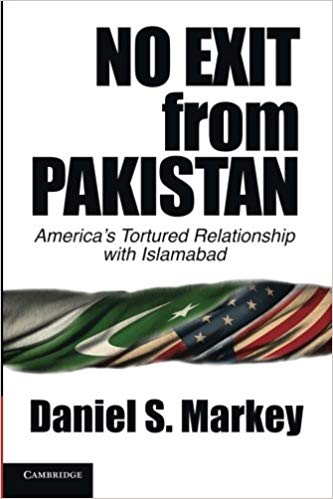News Analysis |
Dressed in a black safari suit, The North Korean leader, Kim Jong-un garnered media spotlight as he detached from his fellows and walked, with his traditional grace, to shake hands with Moon Jae-in, the South Korean President, The two leaders met on Friday, on the South Korean side, to make history. The North Korean leader invited Moon Jae-in to cross the demarcation line into North Korea, posing for pictures as a symbol of future peace.
The smiles and handshakes were unusual for the political observers, as both sides of the borders have been harboring a grudge against each other for over six decades. Mr. Kim marched back to his country after the first session but his short interaction was pleasant, noting, in the Peace House guestbook, that ‘a new history starts now, An age of peace, from the starting point of history’. Besides the emotion-laden smiles, the two leaders signed a historic accord committing them to the complete denuclearization of the Korean Peninsula, and pledging to bring a formal end to the Korean War, which broke out 65 years ago.
The historic accord, also called the ‘Panmunjom Declaration for Peace, Prosperity and Unification’, reveals much about North Korea’s nuclear capabilities, but falls short of announcing and recognizing the role of the United States and China in this mission.. It should be noted that improving the relationship between North and South Korea cannot just be achieved by an agreement between the two countries, and requires the fulfillment of a denuclearization agreement between the U.S and North Korea.
Even if they don’t sign a new accord for peace, the implementation of agreements already signed i.e the Ceasefire Agreement and Indus Water Treaty can boost the confidence of over 1.6 billion people.
Although Kim categorically clarified that both, North and South Korea, will be reunited as one country, there remain some administrative flaws, obstructing the execution of the dreams, which are explained below. The Korean War, which became the core point of Friday’s accord, happened in 1950 when North Korean troops invaded the South. The conflict lingered on for three years before an armistice agreement was inked.
However, the absence of a formal peace treaty was tantamount to an ongoing war in the peninsula. Kim and Moon have vowed to end the war but, with this in mind, there are other players in the peninsula equation including, as stated above, the United States, led by Donald Trump, and Xi Jinping, ruled by China. The viability of the promises made in South Korea will be implemented only if the negotiations between Donald Trump and Kim Jong-un prove successful.
Read more: Actress kidnapped by North Korea dies at 91
Although, Mike Pomoe, the CIA director-turned-secretary of state met Kim earlier in April, confirming the thaw in the ties ruled by firebrand leaders, the fruit of months-long engagements will only appear after Trump shakes hands with Kim in May or June. Recently, Kim announced the suspension of the nuclear program along with the closure of test sites. However, with this in mind, the North Korean hawks can still cast aspirations over the ambitions of U.S., especially considering Trump’s behavior towards the Iran nuclear deal.
The ongoing situation of the Iran nuclear deal shows Trump hinting to walk out of the Joint Comprehensive Plan of Action (JCPOA), just two years after the signing of the pact. This is raising concerns in Pyongyang, that North Korea can also be subjected to the same duality. The people from both sides of the 38th parallel line still carry the scars of violence, as over 1 million individuals lost their lives, yet, eagerly hoping for a positive outcome from President Trump.
Besides the emotion-laden smiles, the two leaders signed a historic accord committing them to the complete denuclearization of the Korean Peninsula, and pledging to bring a formal end to the Korean War, which broke out 65 years ago.
Whether the much-awaited, the interaction between Donald Trump and Kim Jong-un goes for or against expectations, the Kim-Moon meeting is a much-needed lesson for the Asia Pacific, especially India and Pakistan. The two South Asian neighbors have fought a devastating war, of the same intensity, as the Korean one, and are still being bogged down in a plethora of conflicts ranging from Kashmir to Kargil, Siachin to water problems as well as cross-border terrorism to aggression on the Line of Control.
India and Pakistan have fought multiple wars in 1948, 1965, 1971 and the Kargil conflict, with emotions running high in every battle. However, the casualty scale falls much lower than the Korean War. The nuclear-armed neighbors are, on their respective sides, facing challenges from poverty to lawlessness and corruption, but still, refuse to sit down and draw a line of action for peace in future. The North-South Korea détente should be seen as peace objectives for India and Pakistan, who are carrying the baggage of history to this day.
Read more: North Korea says historic summit opens ‘new era for peace’
Although North and South Korea did not face issues concerning terrorism, the accord is hailed as a visible sign of grace and sanity on the international foray. On the same pattern, Pakistan and India can set aside contentious issues, for a while, to agree on some key issues, in a bid to reduce their military spending and look for long-standing peace in the region. Even if they don’t sign a new accord for peace, the implementation of agreements already signed i.e the Ceasefire Agreement and Indus Water Treaty can boost the confidence of over 1.6 billion people.
Whether or not the accord materializes, North and South Korean have laid a ceremonial groundwork for many neighbors across the globe.














